Non-canonical RNA substrates of Drosha lack many of the conserved features found in primary microRNA stem-loops
- PMID: 38509178
- PMCID: PMC10954719
- DOI: 10.1038/s41598-024-57330-5
Non-canonical RNA substrates of Drosha lack many of the conserved features found in primary microRNA stem-loops
Abstract
The RNase III enzyme Drosha has a central role in microRNA (miRNA) biogenesis, where it is required to release the stem-loop intermediate from primary (pri)-miRNA transcripts. However, it can also cleave stem-loops embedded within messenger (m)RNAs. This destabilizes the mRNA causing target gene repression and appears to occur primarily in stem cells. While pri-miRNA stem-loops have been extensively studied, such non-canonical substrates of Drosha have yet to be characterized in detail. In this study, we employed high-throughput sequencing to capture all polyA-tailed RNAs that are cleaved by Drosha in mouse embryonic stem cells (ESCs) and compared the features of non-canonical versus miRNA stem-loop substrates. mRNA substrates are less efficiently processed than miRNA stem-loops. Sequence and structural analyses revealed that these mRNA substrates are also less stable and more likely to fold into alternative structures than miRNA stem-loops. Moreover, they lack the sequence and structural motifs found in miRNA stem-loops that are required for precise cleavage. Notably, we discovered a non-canonical Drosha substrate that is cleaved in an inverse manner, which is a process that is normally inhibited by features in miRNA stem-loops. Our study thus provides valuable insights into the recognition of non-canonical targets by Drosha.
© 2024. The Author(s).
Conflict of interest statement
The authors declare no competing interests.
Figures
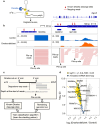
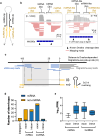
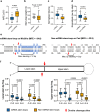
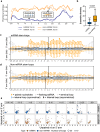
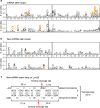
Similar articles
-
A central role for the primary microRNA stem in guiding the position and efficiency of Drosha processing of a viral pri-miRNA.RNA. 2014 Jul;20(7):1068-77. doi: 10.1261/rna.044537.114. Epub 2014 May 22. RNA. 2014. PMID: 24854622 Free PMC article.
-
Structural Differences between Pri-miRNA Paralogs Promote Alternative Drosha Cleavage and Expand Target Repertoires.Cell Rep. 2019 Jan 8;26(2):447-459.e4. doi: 10.1016/j.celrep.2018.12.054. Cell Rep. 2019. PMID: 30625327 Free PMC article.
-
Genome-wide Mapping of DROSHA Cleavage Sites on Primary MicroRNAs and Noncanonical Substrates.Mol Cell. 2017 Apr 20;66(2):258-269.e5. doi: 10.1016/j.molcel.2017.03.013. Mol Cell. 2017. PMID: 28431232
-
Review: Non-canonical role of Drosha ribonuclease III.Int J Biol Macromol. 2023 Dec 31;253(Pt 5):127202. doi: 10.1016/j.ijbiomac.2023.127202. Epub 2023 Oct 2. Int J Biol Macromol. 2023. PMID: 37793530 Review.
-
The role of the precursor structure in the biogenesis of microRNA.Cell Mol Life Sci. 2011 Sep;68(17):2859-71. doi: 10.1007/s00018-011-0726-2. Epub 2011 May 24. Cell Mol Life Sci. 2011. PMID: 21607569 Free PMC article. Review.
Cited by
-
MirGeneDB 3.0: improved taxonomic sampling, uniform nomenclature of novel conserved microRNA families and updated covariance models.Nucleic Acids Res. 2025 Jan 6;53(D1):D116-D128. doi: 10.1093/nar/gkae1094. Nucleic Acids Res. 2025. PMID: 39673268 Free PMC article.
-
Impacts of DROSHA (rs10719) and DICER (rs3742330) Variants on Breast Cancer Risk and Their Distribution in Blood and Tissue Samples of Egyptian Patients.Curr Issues Mol Biol. 2024 Sep 12;46(9):10087-10111. doi: 10.3390/cimb46090602. Curr Issues Mol Biol. 2024. PMID: 39329954 Free PMC article.
References
MeSH terms
Substances
Grants and funding
LinkOut - more resources
Full Text Sources
Molecular Biology Databases

